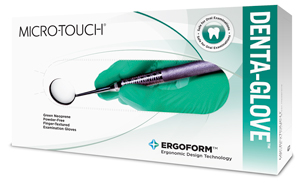Dentists can play a crucial role in a patient’s health
Most dentists feel that screening their patients for risk of certain medical conditions – e.g., high blood pressure or diabetes – would be a valuable service to offer. Most patients would willingly participate, and they have indicated that their feelings about their dentist in terms of knowledge, professionalism and compassion would improve. And primary care physicians think it’s valuable for dentists to screen for medical conditions, and are willing to accept patient referrals from the dental office.
That being the case, why isn’t it being done more often? The answer could be as simple as, it’s not been traditionally done. But that could be changing.
Barbara Greenberg, Msc, PhD, is among those who believe oral healthcare providers can and should assume a larger role in identifying patients at increased risk for developing diseases of public health significance, such as heart disease, diabetes, HIV or hepatitis C; and identifying those with undiagnosed diseases. She spoke on the topic at the 2013 Symposium of the Organization for Safety, Asepsis and Prevention, or OSAP.
Greenberg is chair of the department of epidemiology and community health and professor, New York Medical College, School of Health Sciences and Practice. She has more than 15 years of research experience working in infectious diseases, focusing principally on the areas of immunology, nutrition and HIV/AIDS. During the last eight years, her interest and commitment has expanded to encompass the oral healthcare setting.
The need
Dental-office screening makes sense for a lot of reasons, says Greenberg. Between 60 percent and 70 percent of adults visit their dentist in a given year, and between 10 percent and 24 percent of them haven’t seen a physician in the same time period.
Screening can be most effective for diseases with modifiable risk factors, that is, behavior or characteristics that can be changed, such as smoking or a change in diet, says Greenberg. Examples: coronary heart disease, diabetes, HIV and hepatitis C.
Screening for these four diseases makes sense for other reasons as well: 1) They are of public health significance, that is, they affect a lot of people; 2) onset of disease can be delayed or prevented altogether with early identification; and 3) simple, validated CLIA-waived point-of-care tests are available.
Who should be screened? Greenberg recommends dentists consider implementing the following criteria:
- For heart disease and diabetes: Screen patients 45 years of age and older, and who haven’t seen a primary care physician for a year or more.
- HIV: Follow United States Preventive Services Task Force guidelines, which call for screening all people aged 15 to 65; older adults who are at increased risk for HIV infection; and pregnant women.
- Hepatitis C: Follow United States Preventive Services Task Force guidelines, which call for one-time screening of all adults born between 1945 and 1965 (aka Baby Boomers), as well as persons at high risk for infection and those who received a blood transfusion prior to 1992.
Discussing results
Greenberg emphasizes that she is talking about screening patients for risk of disease, not diagnosing disease. “Dentists can’t diagnose,” she says. Dentists should refer patients who screen positive to a physician for diagnosis and medical follow-up. They can also speak to their patients about behavior changes, such as quitting smoking, getting more exercise and maintaining a healthy weight. Even patients who screen negative, but who haven’t seen a primary care physician for a year or more, should be encouraged to engage with a primary care doctor, she adds.
Dentists will more than likely find their patients are open to the process. “Behavioral literature shows that patients see their dentist as a respected professional they can trust,” Greenberg says. “A special relationship exists between them and their dentist,” as it does between them and their physician.
Surveys indicate physicians are open to accepting referrals from dentists, she adds. “Part of [the challenge] is figuring out mechanisms to get that communication going.” Once that is established, dentists can fax the test results to the physician, or give the patient a copy, which he or she can bring to the doctor. In an ideal world, doctors and dentists would be connected via an electronic health record; but that situation is still rare in today’s healthcare world. Patients on Medicaid may be referred to a local community health center.
Hurdles
Dentists may very well see the wisdom of screening, but roadblocks exist, says Greenberg:
- They may be uncomfortable doing the tests, and need training.
- They may fear additional liability.
- Those who implement screening need to make sure that staff who do the actual testing – e.g., hygienists or assistants – get reimbursed for their time and effort.
- They may have to speak to patients about conditions – e.g., HIV – to which some social stigma is still attached.
There is also, of course, the question of reimbursement. Surveys indicate most patients would be willing to pay $10 to $20 for screening, says Greenberg. And insurers? That’s a work in progress. “I think the insurance companies want to see there’s a demand from patients and dentists to do this,” she says.
As healthcare reform matures, insurers may become more eager to come to the table, says Greenberg. That’s true for two reasons. First, healthcare reform emphasizes overall health, well-being and prevention. Chairside screening fits into that model.
Second, healthcare reform is nudging healthcare providers and payers toward a more integrated system. “Thinking of each of these domains as isolated is problematic,” she says. What’s more, the literature shows an association between oral health and diabetes, cardiovascular disease, even HIV, though the cause and effect relationships aren’t quite clear, she points out. “My goal is to see the [dental team] as an integrated part of the healthcare team, looking at health not just from an oral health perspective.”
Chairside screening could be an integral part of that approach.
Sidebar: CLIA and the dental office
What is CLIA?
The Centers for Medicare & Medicaid Services regulates all laboratory testing (except research) performed on humans in the United States through the Clinical Laboratory Improvement Amendments. CLIA was established to strengthen federal oversight of clinical laboratories to ensure the accuracy and reliability of patient test results.
What is the definition of a lab?
A laboratory is defined by CMS to be a facility that performs certain testing on human specimens in order to obtain information that can be used for the diagnosis, prevention, or treatment of any disease or impairment of a human being; or the assessment of the health of a human being; or procedures to determine, measure or otherwise describe the presence or absence of various substances or organisms in a human body.
What are CLIA-waived tests?
Tests are categorized as waived, moderate complexity or high complexity. To receive a certificate of waiver under CLIA, a lab must only perform tests – such as the glucose meter test – that the Food and Drug Administration and the Centers for Disease Control and Prevention have determined to be so simple that there is little risk of error. (For a list of CLIA-waived tests, go to http://www.cms.gov/Regulations-and-Guidance/Legislation/CLIA/Downloads/waivetbl.pdf.)
What is required of a lab that wants to perform CLIA-waived tests?
Waived laboratories must meet only the following requirements under CLIA:
- Enroll in the CLIA program;
- Pay applicable certificate fees biennially ($150 every two years for a CLIA-waived lab).
CLIA-waived tests are exempted from most CLIA requirements, and the laboratories that perform them receive no routine inspections.
Sidebar 2
The case for chairside screening
- 60-70 percent of adults visit the dentist in a given year.
- 10-24 percent of those have not see a physician in the same time period.
- 41 percent receiving first HIV diagnosis between 2006-2009 had no
history of HIV testing.
Importance of screening for chronic heart disease and diabetes mellitus
- Undiagnosed prevalence:
- 29-71 percent CHD (depending on specific risk factors)
- Approximately 30 percent DM
- Primary prevention:
- CHD: 21-37 percent reduced incidence
- DM: 51 percent reduced incidence
Regarding hepatitis C:
- Baby boomers (born 1945-1965) are six times more likely than others to be infected with hepatitis C.
- One and a half million may be unaware of their infection.
- 37 percent will die without treatment.
- New treatments can provide viral cure for up to 90 percent of those treated.
Sidebar 3
Elements of effective chairside screening
- Purpose is to delay onset, control severity or monitor.
- Most effective for diseases with recognized modifiable risk factors.
- Success also requires simple, cheap, effective screening tools.
- Most useful for prevalent diseases with high morbidity and or mortality.
Sidebar 4: Fact, not fiction
Here’s how a success story might read: Dental staff screens patient. Results indicate patient is at risk of developing diabetes. Dentist talks to patient about lifestyle changes (e.g., change in diet) and refers him or her to physician. Patient makes the changes, avoids onset of disease.
Turns out the story isn’t fiction.
A review of published evidence found that comprehensive lifestyle changes can reduce the incidence of type 2 diabetes in high-risk patients, according to a study in the Annals of Internal Medicine. (Evidence was not strong enough to determine if patients already diagnosed with type 2 diabetes could benefit from such interventions.)
Researchers reviewed available research to assess the effects of comprehensive lifestyle interventions in the prevention of diabetes in adults who have been identified as high-risk (having metabolic syndrome or prediabetes) and the prevention of diabetic complications in adults diagnosed with type 2 diabetes. All lifestyle interventions studied for both groups included a diet and exercise component and were supported by individual, group, and/or telephone counseling. Other lifestyle interventions included a smoking cessation course, regular blood glucose and blood pressure monitoring, and stress management.
See the article at http://www.annals.org/article.aspx?doi=10.7326/0003-4819-159-8-201310150-00007





